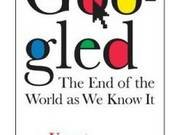The Washington State Convention Center downtown is hosting the Society for Information Display’s 48th Annual Display Week, with a gathering of the world’s best display screen manufacturers showcasing some astounding future technologies.
Without question, the big news at the SID 2010 conference has been the unveiling of LG's 84-in. ultra high-definition 3D screen. You read that right: 84 inches. The resolution is 3840 x 2160. It’s been the talk of the tech geek blogs for a while, but this is the first time it's starred in its own trade show. Currently, it's also an 84-in. paperweight of sorts; there's nothing out there retail-wise that can deliver a signal of that resolution, let alone in 3D.
Still, you can't help lusting for that clear, clean picture. The 3D images are razor sharp, with little motion blur, delivering vibrant colors with solid blacks. If there is a downside, it’s that LG has outpaced 3D technology. That clarity makes the lack of focus outside of the focal point pop out at you, along with the lack of even graduation from foreground to back that gives 3D a pop-up book feeling. And even in a short viewing period, the glasses combined with the screen gave me a little eye fatigue.
The thinnest LG is 2.6mm, and it's hard to believe your eyes, until you walk around the show and see that that record may not last long. It’s basically the width of a magazine, and the whole screen weighs about 8 pounds. And the image is crisp, colorful with great gray scale and true blacks. There is no image distortion if you view the screen from even the most extreme angles....
The top Twitter hashtag for Seattle right now is #WP7, as the smartphone crowd hashes out what the advent of Windows Phone 7 means. TechFlash has "what they're saying," and what they're saying is very complimentary (except for the name, Windows Phone 7). Gizmodo says it's "the most groundbreaking phone since the iPhone." But don't expect to see it until the holiday season.
The short story is that Microsoft has thrown out the old WinMo experience and adopted an augmented Zune HD interface that's heavy on live animation, so that its integration with external sources like Facebook is, to the user, seamless and always-on. "You never see an annoying 'loading...loading...loading,'" says Microsoft's Joe Belfiore.
This, combined with the news that two dozen cell phone providers are forming their own mobile app store, is keeping the mobile marketplace very interesting. That next iPhone had better be a doozy.
Bing, the little local search engine that could, is tech previewing an astounding new integration of photos into their maps. By trawling Flickr for public, geotagged, creative commons pictures and aligning them with their panoramic street views, they've created something that at least in slick YouTube presentations approaches the territory of being indistinguishable from magic. Details of the process are posted on the Bing Blog for those who want to understand the underpinnings rather than just trembling before them in awe.
Seattle is featured in the preview Streetside Photos release along with San Francisco and Vancouver; so for a good sense of the possibilities, try diving into parts of the map that are especially photo-dense like the Pike Place Market or just about any intersection with a view of the Space Needle and let us know if you find any particular gems.
(via waxy.org)
 If you own an iPhone, you've run up against the downside of dominant market share. Local software company Adobe is responsible for Flash, which, besides being a terrific way to annoy site visitors as they wait for landing pages to load or as they scramble to turn down music that blares suddenly, has become the default way to display animation and video on the internet.
If you own an iPhone, you've run up against the downside of dominant market share. Local software company Adobe is responsible for Flash, which, besides being a terrific way to annoy site visitors as they wait for landing pages to load or as they scramble to turn down music that blares suddenly, has become the default way to display animation and video on the internet.
But Apple has so far refused to allow Flash to play in the iPhone's Safari browser. They have their reasons. Adobe has responded to the more technical variety, but perhaps sensing that Apple wouldn't be happy with anything less than iFlash, they have been hammering and sawing on Flash CS5. (They're foregoing a public beta, in fact, to roll out the software faster.)
CS5 contains a packager that "will automatically convert any Flash app into an iPhone app," reports the Washington Post. (A Hulu app, that's what that means! Or it should. Get on that, Hulu. Oh, good.)
But the delay has already given Adobe (and Microsoft's Silverlight, for that matter) a competitor they weren't looking for.
Yesterday YouTube announced it's supporting HTML5 video players, which (currently) work in Chrome, Safari, and ChromeFrame on Internet Explorer. Today it's Vimeo. ReadWriteWeb explains that, "An HTML5 video player will allow videos to be viewed without Adobe's Flashplayer plug-in, videos will load faster and developers will be able to build all kinds of other intriguing features into a media delivery scheme based on the next version of HTML."
You can sign up for an experimental HTML5 video player here.
I am not backing a particular horse here--my hope is simply to maximize the streaming video I can watch via iPhone, as a way of paying AT&T back for their unlimited data plan pricing. Flash, HTML5--I just want to play Lawrence of Arabia in high rotation until a data center buckles.
Over all the recent Droid smartphone hype, there is the looming shadow of Google. The idea is that Android::mobile devices is the 2.0 version of Windows::personal computer. Without realizing it, you're snug in Google's terabyte embrace. Is that so bad?
Tonight, November 9, New Yorker writer Ken Auletta talks to the Seattle Times' Brier Dudley at the downtown Seattle Public Library at 7 p.m. (listen to him on KUOW at noon). Auletta's book, Googled: The End of the World as We Know It is the "semi-official" story of Google; Auletta had access to Brin and Page, investors, and employees.
If you log in to Google and click on My Account, you'll see a Dashboard option that you can click--it assembles in one place most of the ways that you interact with Google. It's astonishing in some ways, the level of trust placed in a company that is gaining a market-spanning presence that will not need to rely on trust.
This is the dilemma Microsoft has faced for some time: How can we pretend that customers are making a choice...


Most Recent Comments